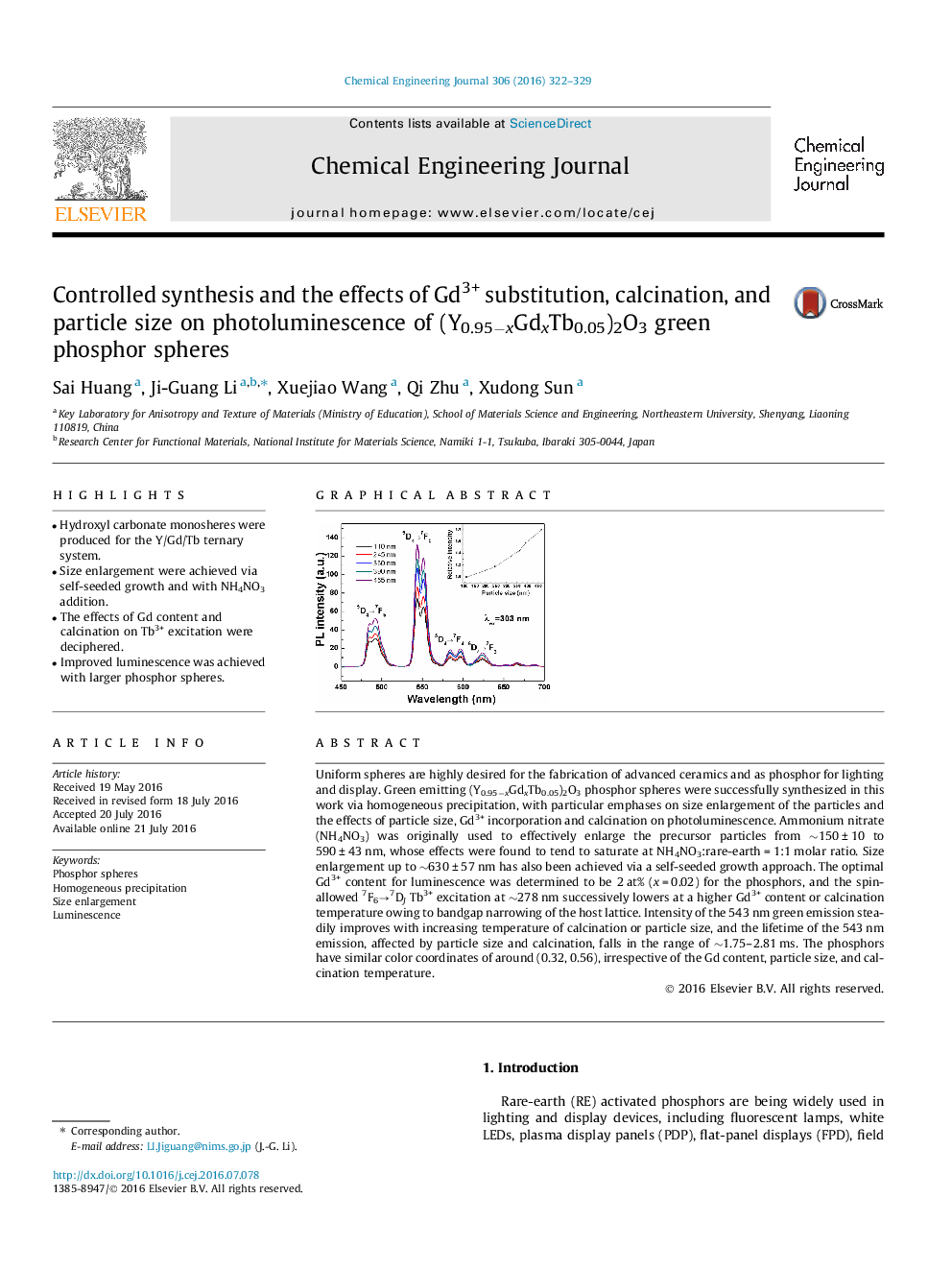| Article ID | Journal | Published Year | Pages | File Type |
|---|---|---|---|---|
| 145285 | Chemical Engineering Journal | 2016 | 8 Pages |
•Hydroxyl carbonate monosheres were produced for the Y/Gd/Tb ternary system.•Size enlargement were achieved via self-seeded growth and with NH4NO3 addition.•The effects of Gd content and calcination on Tb3+ excitation were deciphered.•Improved luminescence was achieved with larger phosphor spheres.
Uniform spheres are highly desired for the fabrication of advanced ceramics and as phosphor for lighting and display. Green emitting (Y0.95−xGdxTb0.05)2O3 phosphor spheres were successfully synthesized in this work via homogeneous precipitation, with particular emphases on size enlargement of the particles and the effects of particle size, Gd3+ incorporation and calcination on photoluminescence. Ammonium nitrate (NH4NO3) was originally used to effectively enlarge the precursor particles from ∼150 ± 10 to 590 ± 43 nm, whose effects were found to tend to saturate at NH4NO3:rare-earth = 1:1 molar ratio. Size enlargement up to ∼630 ± 57 nm has also been achieved via a self-seeded growth approach. The optimal Gd3+ content for luminescence was determined to be 2 at% (x = 0.02) for the phosphors, and the spin-allowed 7F6→7DJ Tb3+ excitation at ∼278 nm successively lowers at a higher Gd3+ content or calcination temperature owing to bandgap narrowing of the host lattice. Intensity of the 543 nm green emission steadily improves with increasing temperature of calcination or particle size, and the lifetime of the 543 nm emission, affected by particle size and calcination, falls in the range of ∼1.75–2.81 ms. The phosphors have similar color coordinates of around (0.32, 0.56), irrespective of the Gd content, particle size, and calcination temperature.
Graphical abstractFigure optionsDownload full-size imageDownload as PowerPoint slide
